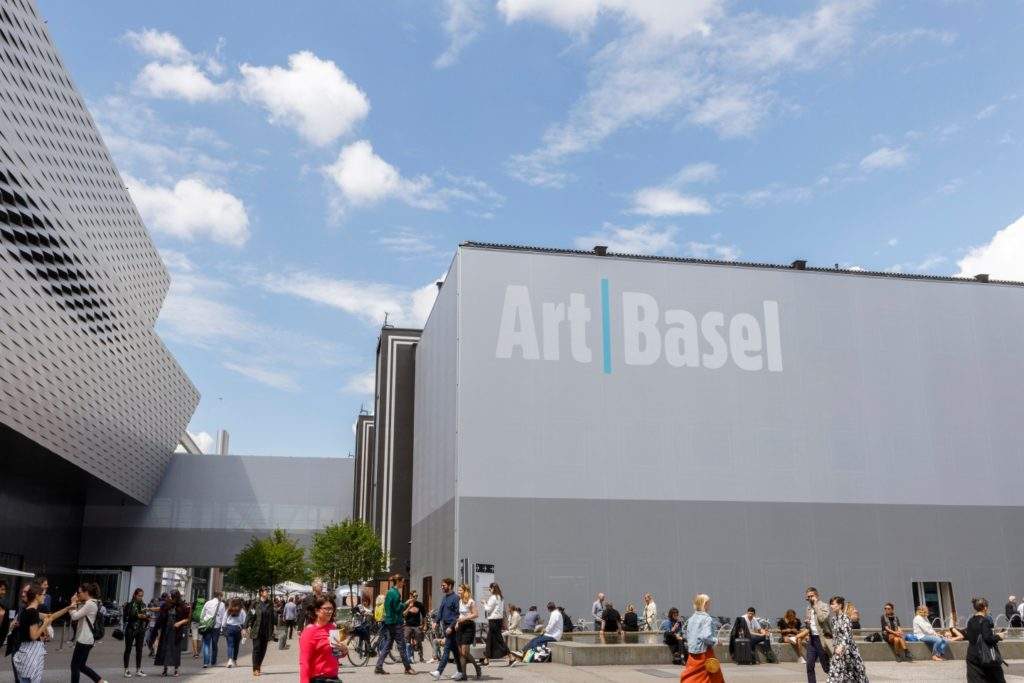Art Basel debuts in Qatar with its first edition in Doha, scheduled for Feb. 5-7, 2026, with two preview days reserved for collectors and insiders on Feb. 3 and 4. The new fair, produced in partnership with Qatar Sports Investments (QSI) and QC+, is the fifth global stop for the Art Basel brand after Basel, Miami Beach, Hong Kong and Paris, and marks a decisive step in the expansion into the Middle East. With 87 galleries from 31 countries and territories and 84 artists involved, Art Basel Qatar aspires to become not only a commercial showcase, but also a cultural platform capable of enhancing the region’s creative ferment and connecting it with major contemporary art capitals. The fair’s organization is supported by a selection committee that includes Lorenzo Fiaschi (Galleria Continua), Shireen Gandhy (Chemould Prescott Road), Daniela Gareh (White Cube), Mohammed Hafiz (Athr Gallery), Sunny Rahbar (The Third Line) and Gordon VeneKlasen (Michael Werner Gallery).
The project aims to distinguish itself right from the curatorial framework, entrusted to Egyptian artist Wael Shawky, who conceived the first edition as a journey around the theme Becoming. The idea, Shawky explains, is to reflect on the ongoing transformation of humanity and the systems that shape ways of living, believing and creating meaning. The fair will not adopt the traditional booth format, but will offer an open-format exhibition spread between two main venues - M7 and the Doha Design District - as well as a series of public interventions in the Msheireb Downtown Doha district, the creative and cultural heart of the city.


Shawky’s artistic direction aims to transform the fair into a place of dialogue and storytelling, where the commercial dimension coexists with aesthetic and social reflection. The theme of Becoming will be interpreted by artists who, through works and installations, will explore how identities and cultures redefine themselves over time. “The Gulf is at the center of this story,” says Shawky, “a place where oral traditions intertwine with digital networks and ancient trade routes return as new paths of cultural exchange.” The goal, he adds, is to create a space where artists’ stories can emerge and dialogue, with public projects that will give voice to regional voices and extend their impact beyond local borders.
Noah Horowitz, CEO of Art Basel, emphasizes how the initiative represents a new stage in the group’s mission to serve as a catalyst for cultural exchange and growth in the global art market. “Our selection of galleries for the first year is exciting,” Horowitz says, “welcoming new voices and geographies while strengthening relationships with our long-standing partners and clients. This project is only possible because of long-term collaboration with QSI and QC+, and I am excited about the impact it will have in the coming years.”
Art Basel’s Chief Artistic Officer and Global Director of Fairs, Vincenzo de Bellis, expressed satisfaction with the response from gallerists and artists. “The quality and variety of participation reflects the strength of the project and the energy it has generated both regionally and internationally,” he said. "Working with Wael Shawky was inspiring-his vision inspired top-notch presentations around the theme of Becoming."
The fair, which will have Visit Qatar as Lead Partner, will particularly highlight the vitality of artistic production from the Middle East, North Africa and South Asia, solidifying Doha’s role as a new hub for cultural and business dialogue. More than half of the participating artists come from these areas, including such recognized names as Etel Adnan, Ali Banisadr, Simone Fattal, Ali Cherri, Meriem Bennani and Iman Issa.
The gallery scene reflects the same geographic and conceptual richness. Regional entities include Hafez Gallery (Jeddah and Riyadh), Gallery Misr (Cairo), Le Violon Bleu (Tunis), Saleh Barakat Gallery (Beirut) and Tabari Artspace (Dubai), all making their Art Basel fair debuts. Also arriving from the Arabian Peninsula are al markhiya gallery (Doha), Green Art Gallery (Dubai), Lawrie Shabibi (Dubai) and The Third Line (Dubai), while from the Levant are Marfa’ Projects and Galerie Tanit in Beirut, along with Turkey’s Pilot Galeri in Istanbul. Participating from North Africa are ArtTalks | Kanafani Gallery and Loft Art Gallery in Casablanca, while from India comes Chemould Prescott Road in Mumbai. Significant names on the international parterre, however, include Italy’s Cardi Gallery, Galleria Continua, Massimo De Carlo, Lia Rumma, Tornabuoni and Lorcan O’Neill, Switzerland’s Hauser & Wirth; the American Gagosian, Pace, David Zwirner and Gladstone; the British Lisson, Victoria Miro, White Cube, Michael Werner and Grosvenor; the German Esther Schipper, Thomas Schulte, Sprüth Magers, Eigen + Art and neugerriemschneider; the Austrian Thaddaeus Ropac and Krinzinger; and the French Perrotin, Lelong and Mennour.
Art Basel Qatar was established as the centerpiece of a unique collaboration between Art Basel, its parent company MCH Group, Qatar Sports Investments and QC+, a strategic and creative collective specializing in cultural and business development projects. QSI, founded in 2004, is a global investment group with a portfolio ranging from sports to entertainment, including soccer club Paris Saint-Germain, professional circuit Premier Padel, and Portuguese team SC Braga. QC+, on the other hand, defines itself as a platform that combines culture and innovation to generate new forms of value through immersive experiences, regeneration projects, and initiatives related to the arts, tourism, and dining.
 |
| This is what the first edition of Art Basel Qatar will look like. 87 galleries from 31 countries and no booths |
Warning: the translation into English of the original Italian article was created using automatic tools. We undertake to review all articles, but we do not guarantee the total absence of inaccuracies in the translation due to the program. You can find the original by clicking on the ITA button. If you find any mistake,please contact us.